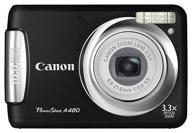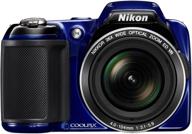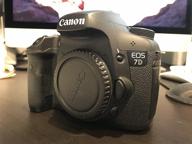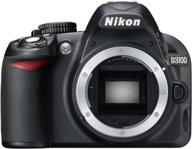
Review on Camera Canon EOS 200D Kit EF-S 18-55mm f/3.5-5.6 DC III, black by Ada Borkowska ᠌

Matches the description completely, very satisfied.
I already have a 6D, I've been using Canon cameras for a very long time, and I've handled models such as the 350D, 650D, 40D, 80D, 5D, and 6D. I didn't buy this one for myself. If we take into consideration the possibilities of application to a variety of activities, which I understand in roughly the following ways: 1. Landscape is where everything works quite well, with the exception of one tiny annoyance: there are no C1 or C2 modes on the wheel, which is normally where you would configure the various options. Only three frames are allowed for bracketing, with a maximum of plus or minus two. 2. Portrait – you are able to shoot (of course, you will need to purchase another lens, at least their new 50/1.8 STM for 7,000), from the minuses – there is not an oriented AF point, which means that you are able to focus on the top point, and you do not need to change it when switching from landscape orientation to portrait orientation. It is recommended to take the picture using the live view mode since, first of all, it focuses more precisely in that mode, and secondly, you can focus on the face without having to worry about any issues with orientation. The second drawback is that the auto-iso feature cannot be configured, and it also operates in an odd manner. When using a whale lens and setting the aperture to 50/1.4, the maximum shutter speed is 1/50, even though it should be 1/80 (with a whale lens, this is acceptable because there is a stabilizer present), however when setting the aperture to 85/1.8, the maximum shutter speed is 1/125. 3. Reporting is definitely doable, but doing so significantly restricts the buffer, which can only hold five raw frames at a time. 4. Everything is terrible in this mode because there are no ServoAF settings at all, focus priority, or shooting speed, for example. The sports mode is the worst. The frame buffer, which only holds five images, is obviously quite inadequate for a game of this type. 5. When it comes to shooting videos, in my completely unqualified view, everything is working out just perfectly. The built-in microphone produces a lot of background noise, but the device writes quite effectively when using an external microphone; it does so much better than the 6D. (I tried the lavalier Boya BY-M1). At this time, there is no recording format that does not utilize interframe compression. There is no means to alter the color temperature; however, if necessary, you can set the BB and apply compensation on a white sheet. 6. It's a shame that they didn't include a rav-converter instead of just defaulting to the use of filters for travel and use without a computer. On 6D, you can take a photo in Rav, tweak the settings, save it to jpeg and send it via WiFi to your phone, and here you have to either set everything correctly before shooting, or use a card reader.
- The matrices are the same as those found in the earlier APS-C models. The controls are positioned in a very convenient manner. A quality lens that is included in the package and does not flare around the corners. There is no rotation on the front of the lens, thus you are able to utilize polarizing and gradient filters. Excellent construction; there is no backlash, and the assembly does not creak. recording of high-quality sound obtained from a microphone placed outside the room
- There are some features of the software that are missing: Auto ISO setting There is no rav-converter built in; instead, there is some foolishness in the form of the application of art filters. There are no settings for tracking autofocus. Changing ISO by a third of a step is not achievable at this time. No ISO50 LiveView prohibits the use of silenced firearms. There is no option in LiveView to disable the exposure simulation (turns off when external flash is connected) Low quality recordings were made using the device's internal microphone.
New products
Comments (0)
Top products in 📷 Digital Cameras

Canon PowerShot A480 camera, black

108 Review

Nikon COOLPIX L810 Digital Camera: 16.1MP, 26x Zoom, NIKKOR ED Glass Lens, 3-inch LCD (Blue)

95 Review

Discontinued Canon EOS 7D Digital SLR 📷 Camera Body Only with 18 MP CMOS Sensor

88 Review

Nikon D3100 DSLR Camera Body (Kit Box) - No Lens Included, International Version with No Warranty

298 Review





